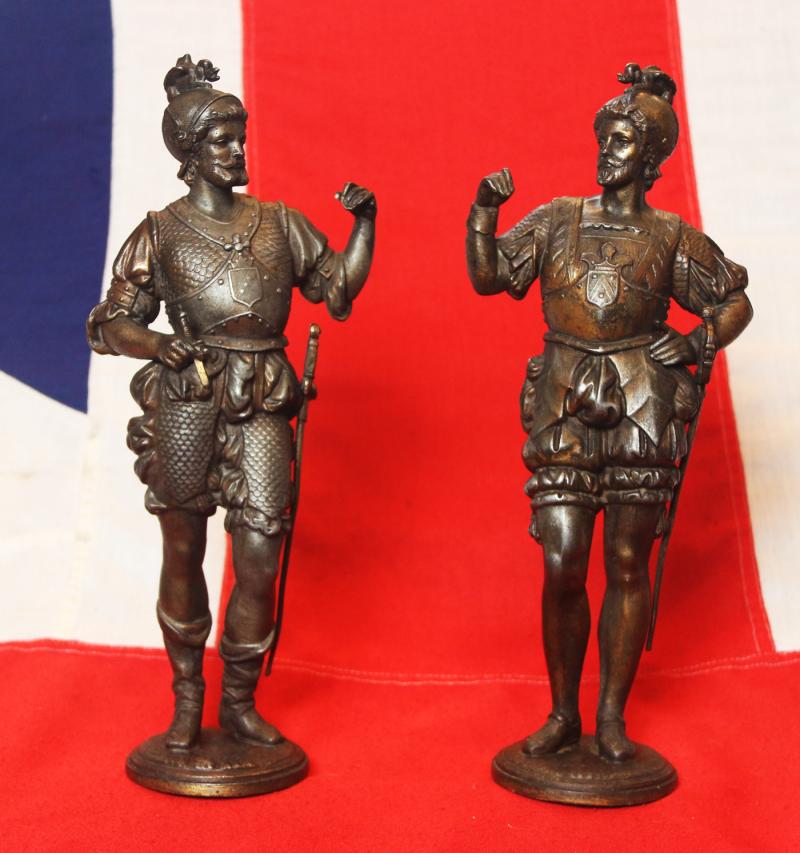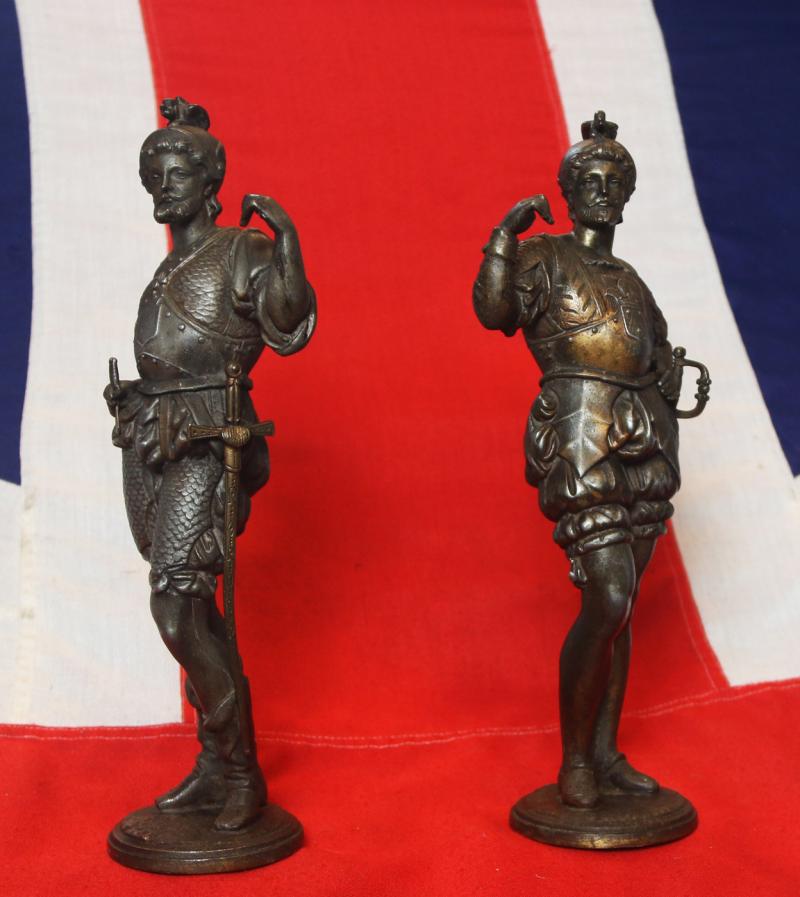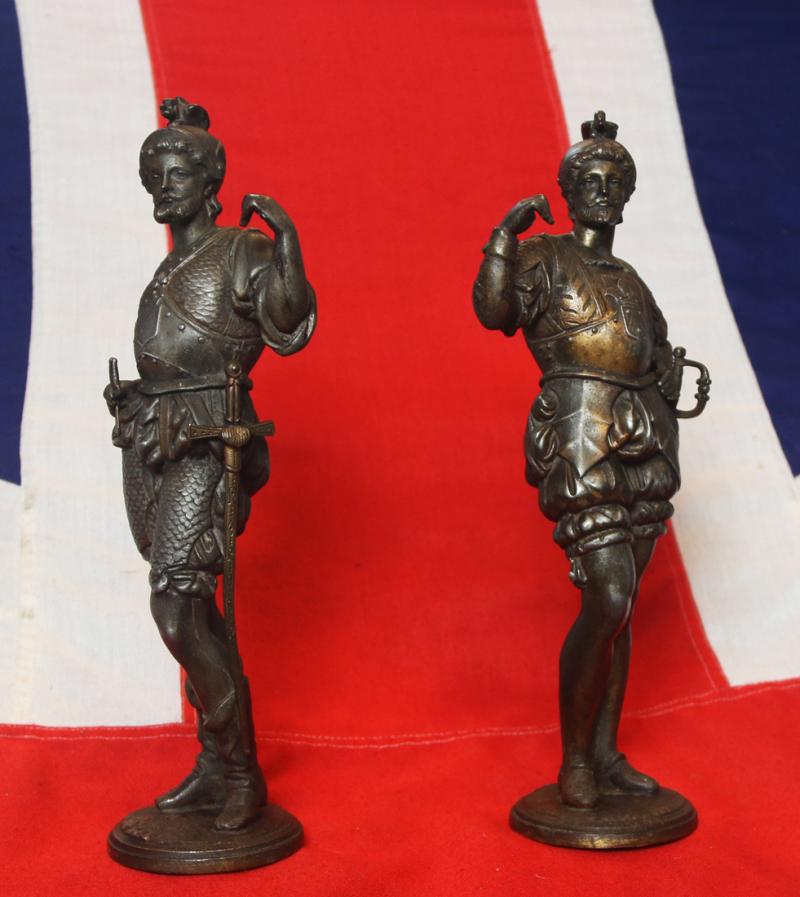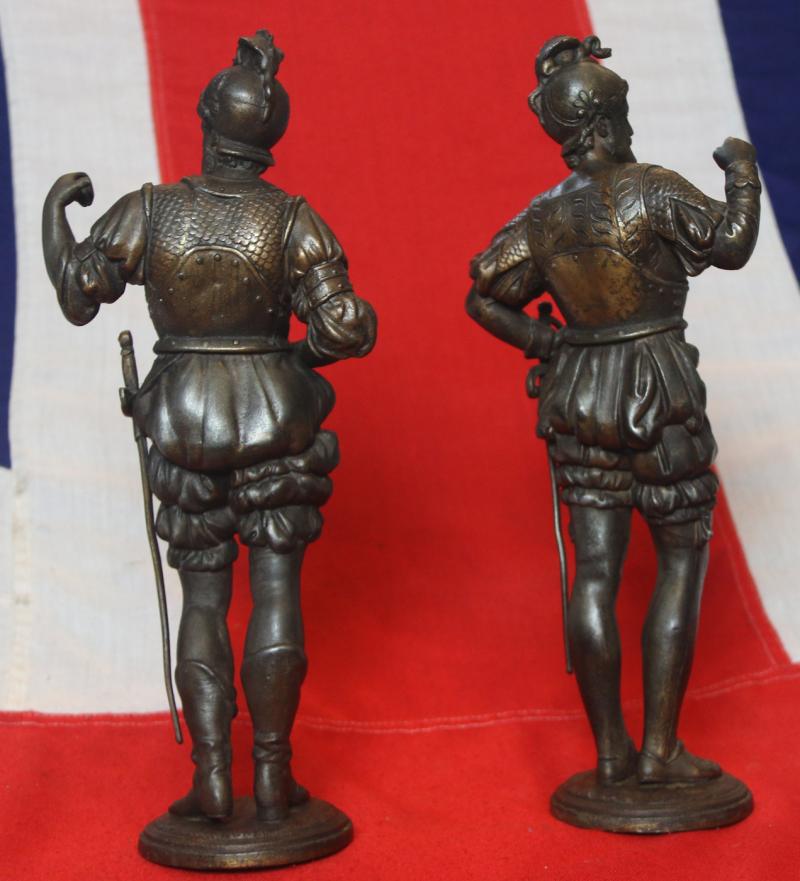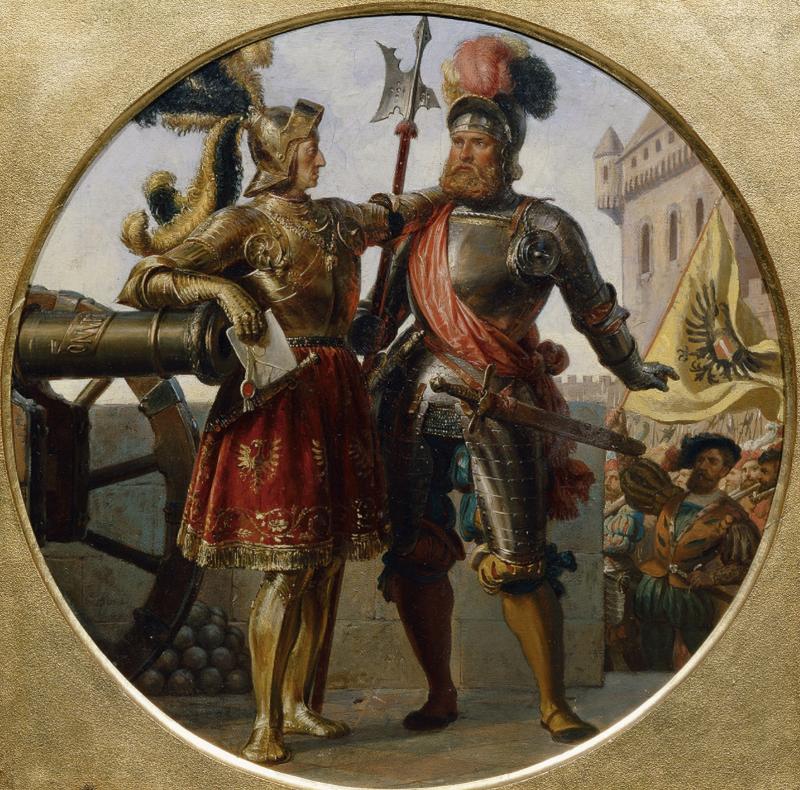19th Century, Circa 1880, Victorian Period Classical Figures of Renaissance Knights or the Founders of the Landsknechte Knight Mercenaries
A most attractive pair of original antique bronzed classical military figurines of historical armoured nobles. Possibly a rendition of Kaiser Maximilian I. und Georg von Frundsberg,
See photo in the gallery of Kaiser Maximilian I. und Georg von Frundsberg, depicting Maximilian I and Georg von Frundsberg, founders of the Landsknechte, by Karl von Blaas
A pair that would enhance any suitable interior decor, especially a gentleman’s study or library. In the past we have seen such figures suitably converted into pairs of lamps with finely formed lampshades, and that can be incredibly effective, especially for interior decorators.
Over the past decades we have sold many such similar pairs of classical bronzed figures to such as, Robert Kime, the so called king of English decorators, the appointed interior decorator to the late Queen Mother, and King Charles. Plus to the great David Hicks, another from the pantheon of the greatest world decorators, who like Robert adored the eclectic mixing of decorative, especially classical, antiques with modern textiles and furnishings.
The Landsknechte were Germanic mercenaries used in pike and shot formations during the early modern period. Consisting predominantly of pikemen and supporting foot soldiers, their front line was formed by Doppelsöldner ("double-pay men") renowned for their use of Zweihänder and arquebus. They formed the bulk of the Holy Roman Empire's Imperial Army from the late 1400s to the early 1600s, fighting in the Habsburg-Valois wars, the Habsburg-Ottoman wars, and the European wars of religion.
Although prone to mutiny if unpaid and divided within their ranks between Catholics and Lutherans, the Landsknechte were well-armed and experienced warriors, recruitable in large numbers throughout Germany and Austria by the Holy Roman Emperor; therefore, they guaranteed both quantity and quality to the Imperial military for a century and a half. At their peak during the reign of Charles V of Habsburg, and under the leadership of notable captains such as Georg von Frundsberg and Nicholas of Salm, the Imperial Landsknechts obtained important successes such as the capture of the French King Francis I at the Battle of Pavia in 1525 and the resistance against the Ottoman Turks led by Suleiman the Magnificent at the Siege of Vienna in 1529, while also being responsible for the infamous Sack of Rome in 1527
Bronze and light gilt finished spelter, figurines.
This alloy was first introduced by Sheffield manufacturers in the second half of the 18th century and is a product of the industrial revolution.
It was also known in its early days as white metal. it was hugely popular for sculptures of figures for decorative display, usually of historical figures.
Condition for age very good, One figure lacks a thumb.
13 inches high
Every single item from The Lanes Armoury is accompanied by our unique Certificate of Authenticity. Part of our continued dedication to maintain the standards forged by us over the past 100 years of our family’s trading, as Britain’s oldest established, and favourite, armoury and gallery
Code: 25010
695.00 GBP

